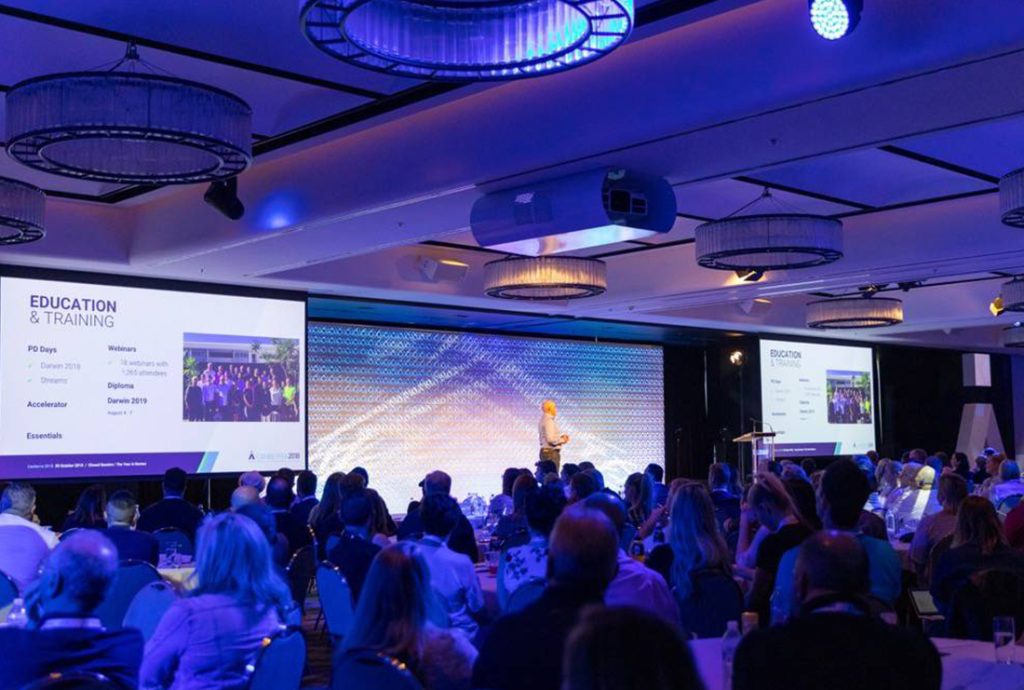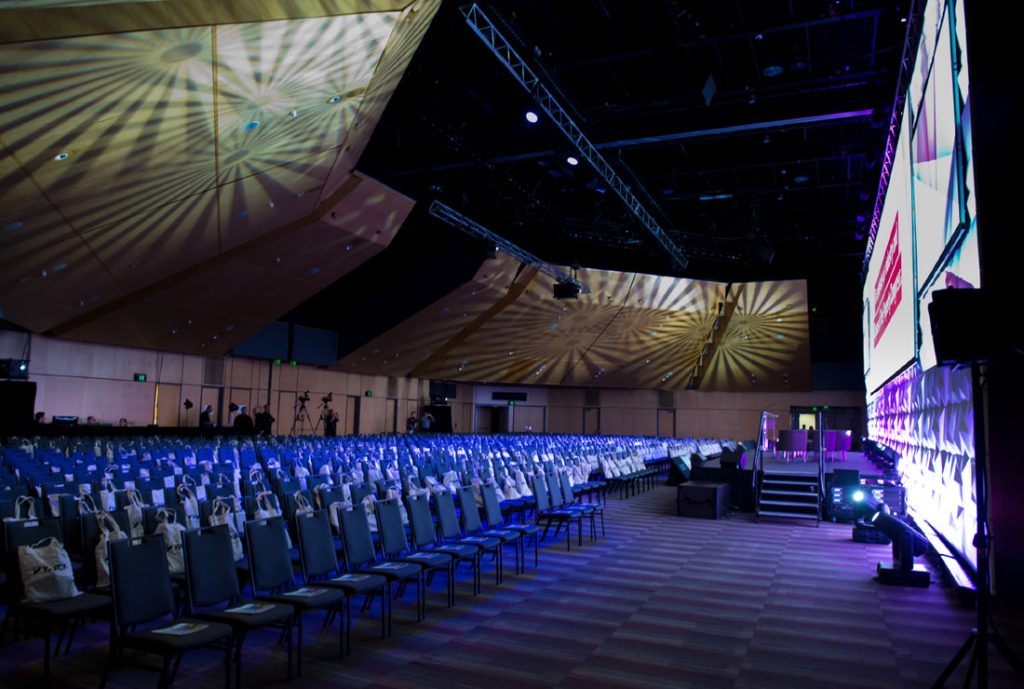Event management and audio-visual services go hand-in-hand, yet they’re also very distinct aspects of planning an event.
For professionals in the events industry, it can be challenging trying to keep up with all the technical aspects of audio-visual for events. Yet it’s also really important that you understand what goes into planning an audio-visual production.
To get you up to speed on some of the common aspects of event AV, have a read of this article. It will help you understand more about planning your audio-visual equipment requirements.
[vc_separator type=’normal’ position=’center’ color=’#d6d6d6′ thickness=’1′ up=’40’ down=’35’]
Microphones
As an event planner, you know you’ll need to organise microphones for your guest presenters. The question is, how many will you need? And more importantly, what type of microphone will best serve your needs?
This will largely depend on how many presenters you have and how they will be presenting on stage.
For example, if your presenter needs to be able to move around the stage or use their hands to demonstrate certain points, then using a wired microphone wouldn’t be a great option and you should consider the wireless options available to you.
Click here to learn more about the different types of microphones and what they’re used for.
Mixers
Mixers, also known as sound boards, are used to combine and control audio signals before they are sent out through your speakers.
Depending on where you’re holding your event, you may find that your venue has a basic mixer available for use. If this is the case, make sure to check it can handle the number of inputs you require for your technical production.
Vision switchers
Similar to mixers, a vision switcher is a piece of technical equipment that allows you to manage various incoming signals and direct them to your designated output (ie your projection screen).
Switchers are really important for presentations where you’ll need to display multiple visuals through a single device. This could include slide shows, videos, camera images etc. and is common for multiple event types including conferences, product launches and gala awards.
As with all technical equipment, you’ll need to check that the video switcher available to you has the capacity to handle all of your vision requirements.
Event lighting
It’s super important that your audience can see what’s happening on stage. Static fixtures are essential to provide stage wash, panel lighting and lectern lighting.
If you’re filming the event, you will want to be even more careful to ensure the entire stage is lit consistently whilst minimizing spill onto your screens.
What else can lighting do? Well, you could enhance the entire room by featuring an impressive coloured walk-in lighting look. For extra dynamics, you could utilise LED lighting to change the colour palette from session to session.
Gala Dinner in the same space? No problem! Change the look and feel of the entire room by stepping up your lighting impact during the room turn. Moving table wash, table pin spots, gobo break-up lighting. Haze, moving beams, the options are endless.
Wifi bandwidth, reliability & access
Just because your venue offers Wifi doesn’t mean that it will have the right bandwidth to support your event AV.
Especially if you’re offering livestreaming services, your event will require fast and reliable connectivity to ensure there are no lags or downtime throughout your production. For large-scale events, attendees will also chew into your available bandwidth and potentially slow speeds for your presentations.
If consistent connectivity is crucial to the success of your event, chat with your AV and event management team about workable internet solutions.
Timing
Timing doesn’t just refer to your presenter schedule.
Timing is crucial to the set up and pack down of your event. Depending on how much equipment you’ll need to run your event, you’ll need to make sure that your venue contract provides enough time to enable your AV partner to set up pre-event (including rehearsal time if required) and pack down after your event..
Make sure to negotiate your bump in and out times prior to signing a contract to avoid being charged additional fees for exceeding your contracted times.
AV lingo
Even for experienced event planners, it can be really easy to get confused with all the jargon thrown around by your audio-visual services and staging company.
Check out this article to learn more about common AV terms and what they mean.
If you’re planning an event and are interested in including livestreaming for remote audiences, chat to the experts at con-sol about how we can deliver exceptional AV services that your audience loves to engage with.
[templatera id=”16790″]




